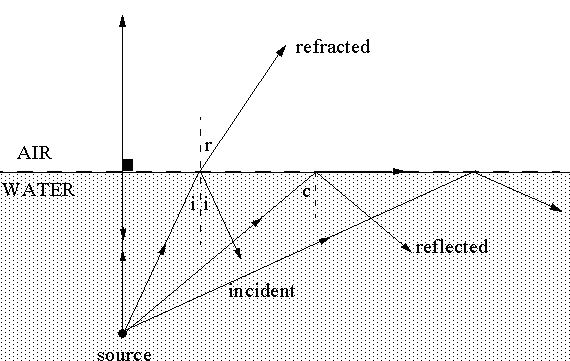
Suppose that a ray of light originates from an underwater source and travels upwards. At the surface part of it will be refracted into air and part will be reflected back into the water. The angle of reflection equals the angle of incidence, as shown, while the angle of refraction must be consistent with Snell's law:
n(w)sin(i) = n(a)sin(r) Equation 1
sin(r) = (1.33)sin(i) Equation 2

REFERENCE: